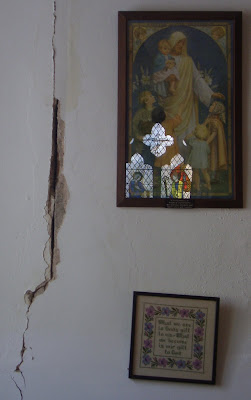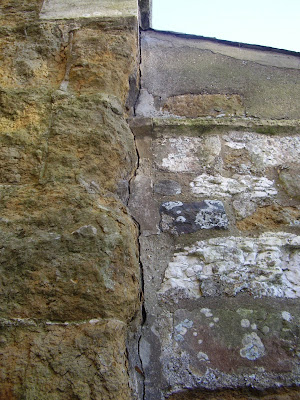
Any mild frustration with the Church of England or the diocese of Lincoln has been eclipsed in the past fortnight by banging-head-against-wall frustration with BT and Virgin Media which has dominated the last couple of weeks of my life.
The story may begin with the fact that we have sold my mother’s empty house in Northamptonshire. The repeated travelling there and back for final arrangements and clearance was inevitably consuming of almost all my available ‘time off’ and much emotional energy, but the good thing is completion of the sale has removed one of the significant sources of background anxiety from my life, and was achieved just before the heavy snow made travel so difficult.
The link is that my mother signed several copies of a standard letter saying she was now living in a Home elsewhere, giving the completion date of the sale of her house, and asking that final bills be sent to me. These letters went to those responsible for everything from Council Tax (who responded immediately and helpfully) to electricity (whose final bill is still awaited). BT, however, responded by cutting off my phone here. At least I am guessing that this was the reason they did so; nobody at BT can offer an explanation.
An e-mail from my internet provider popped up on 23rd November. Virgin Media said it was sorry I was leaving. I phoned to ask why. BT had told it that the phone line down which it provided my e-mail and the internet was to cease at the end of the day. I phoned BT. I was told the order to cease my line would be cancelled. It wasn’t. It would be unedifying to write pages about every stage of what has happened since. Suffice it to say that I have been on the phone to BT and Virgin Media sometimes several times a day since, and the story is not yet complete.
Neither has a customer care department which wanted to assist putting things right, let alone liaise with the other. Both treat my re-connection as the connection of a new customer seeking to receive services for the first time. I had a few days without a phone line, a week without my widely advertised phone number, and three weeks (until today) with no access to the internet; typed as one sentence this doesn’t look as life destroying or even occasionally tear provoking as it has felt trying to sort it all and not being able to use the channels of communication on which we’ve come to rely for everything from work to leisure, from accessing information to on-line banking.
It appears competition has achieved lower prices by ensuring a basic and inflexible level of service since no provider can afford to become more expensive than its rivals by providing anything better. A member of one of the congregations here (who staffs a different sort of telephone help line) had told me only a few days earlier that she had been on a period of ‘notice to improve’ because she was taking too long trying to be helpful and was thus not getting through her calls fast enough. So, I have discovered since, I am helpless in the face of what has even been contradictory but equally inaccurate answers and undertakings from those locked into set procedures and sometimes out of their depth at the same call centre on the same day. It has indeed been ‘like one of those bad dreams’.
 St Nicolas’ appears to have had a clerestory and a south porch ahead of the major restoration in 1865 (at least, I assume that is when the changes were made, as I also assume other changes were made at the time including the insertion of a plaster mock chancel arch which was then taken out in about 1900).
St Nicolas’ appears to have had a clerestory and a south porch ahead of the major restoration in 1865 (at least, I assume that is when the changes were made, as I also assume other changes were made at the time including the insertion of a plaster mock chancel arch which was then taken out in about 1900). 








